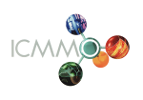Towards the control of 3D refractive index tensor in glasses

Coordinator
The FLAG project coordination is provided by the group MAP/SP2M/ICMMO/UPSud.
B. Poumellec DR CNRS and Matthieu Lancry MCF
Partners
LPPM/ISMO/UPS (also RTRA and PRES partner), B. Bourguignon DR CNRS : http://www.ismo.u-psud.fr/spip.php?rubrique30
LISV/UVSQ (also PRES partner), E. Hervé Pr: http://www.lisv.uvsq.fr/
Thales Research and Technology, B. Loiseau Dr : http://www.thalesgroup.com/
CPMOH/UB1, E. Freysz et L. Canioni : http://www.cpmoh.cnrs.fr/SLAM/
Associated
3S Photonics : www.3Sphotonics.com
Context
The project is to master femtosecond laser – glass interaction in the view to achieve applications from a newly appearing technology i.e. 3D direct shaping of optical properties in silica-based glasses by means of femtosecond laser. The interaction of this kind of laser with silica-based glasses is such that laser-induced refractive index change can be as large as 10E-2 (the most achievable at this date by any available method) in any glasses, the linear birefringence can be as large as 80% (a unique feature), the attenuation can be as low as a dB/cm (can be improved) but the writing speed can be as large as 1 cm/s! And, on top of that, this is made locally in 3D due to high non-linear interaction. These features lead to think to tremendous progress in photonics with such a flexible tool. Especially, we think that we will be able to show the possibility for achieving adapted optical small components to transform any beam characterized by a set of parameters in its section like ![]() where
where ![]() corresponds to a point in the beam cross section,
corresponds to a point in the beam cross section, ![]() is the wave vector at this point,
is the wave vector at this point, ![]() is the polarisation vector and I is the intensity, into any other one having different set of parameters.
is the polarisation vector and I is the intensity, into any other one having different set of parameters.
The scientific and technical objectives of this project, for the years ahead, are as follows:
Characterize: Characterization of photo-induced structural changes and related properties. At this step, the material structure has be be analyzed from the micrometer scale, down to nanometer scale and its optical properties. At the end of this stage, the boundaries of relevant parameters of the beam (polarization, repetition rate, pulse duration, beam concentration, asymmetric spectral beam) can be determined for each material.
Rationalize: understanding the interaction mechanisms between the femtosecond laser and silica-based glasses sufficiently in order to reach a rational on the limitation of a given effect against the laser parameters and other problem parameters. For instance, for birefringence property, we have to make links between structure change and strain-stress field induced in the glass. Then, to make links between structure changes and plasma and finally between plasma structures and light beam parameters.
Innovations: prototypes of 3D integrated optical devices such as optics (retardation plates, Fresnel lens, axicons), 3D waveguides and Volume Bragg grating can be fabricated and characterized in collaboration with industry such as Thales R&T, Thales Laser, Horiba Jobin-Yvon but also SMEs as 3S Photonics in the field of optical telecommunications. On the other hand, we also study the factors affecting the light scattering, and propagation losses in these micro-structured materials to unlock the industrial potential of this writing technique. We will seek to fill in patents whenever necessary.

